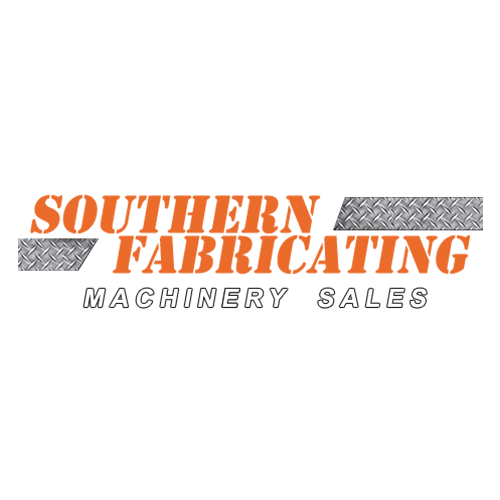Posted By: Andy Kamashian | Posted On: December 20, 2024
Choosing the Right Tube Bending Machine: Mandrel vs. Rotary Stretch Benders
In industries such as automotive, aerospace, construction, and manufacturing, precision and efficiency in tube bending are critical. Whether you're shaping tubes for an exhaust system, roll cages, or structural supports, selecting the right tube bending machine can significantly impact the quality of your output, production time, and costs. Among the various tube bending methods, two stand out as industry staples: mandrel tube benders and rotary stretch benders. But how do you determine which one suits your application? Let’s dive into the details of each method, their unique capabilities, and how to identify which is the right fit for your specific needs.
Understanding Tube Bending Machines
Before we analyze the differences between mandrel and rotary stretch benders, it’s important to understand what each machine is designed to do:
-
Mandrel Tube Bending
- A mandrel tube bender uses an internal support tool (a mandrel) that is placed inside the tube during the bending process.
- This mandrel prevents the tube from collapsing, wrinkling, or deforming, particularly when bending thin-walled tubes or achieving a tight radius.
- Mandrel bending is the go-to method for applications where high precision and structural integrity of the tube are required and the tubing used ("tube" not "pipe" is the key word here) is thin walled.
%202018%20BLM%20Elect-40%20Tube%20Bending%20System%20-%20Pic%201.jpg?width=640&height=480&name=(5005)%202018%20BLM%20Elect-40%20Tube%20Bending%20System%20-%20Pic%201.jpg)
-
Rotary Stretch Bending
- A rotary stretch bender works by gripping the ends of the tube and stretching it over a die to create the bend.
- The stretching process minimizes springback and wrinkling but relies on the inherent strength and thickness of the material and deformation is allowable.
- Rotary stretch benders are commonly used for applications requiring larger radii and consistent results across longer sections and is typically performed in pipe or thicker walled tubing.

Each of these machines provides unique advantages, but their suitability depends on factors like material type, wall thickness, bend radius, malleability and end-use application.
Mandrel Tube Bending: When Precision is Paramount
Mandrel tube bending excels in applications where maintaining the integrity of the tube's shape and internal diameter is critical. This process is particularly beneficial for:
-
Tight Radius Bends
- When the bend radius is small relative to the tube diameter, the risk of wrinkling or flattening increases. The mandrel supports the tube internally to maintain its circular cross-section.
- Industries such as automotive exhaust manufacturing or roll cage fabrication rely heavily on mandrel bending for this reason.
-
Thin-Walled Tubes
- Thin-walled tubing is more prone to collapse during bending. By placing the mandrel inside the tube, it prevents deformation, ensuring a smooth and uniform bend.
- For applications like HVAC systems, fluid lines, or lightweight structures, this method is ideal.
-
High-Precision Applications
- For industries requiring exact tolerances and smooth interior finishes, such as aerospace, medical devices, or oil and gas, mandrel bending is unmatched.
Advantages of Mandrel Tube Bending:
- Maintains the structural integrity of the tube keeping internal flow rates and volume the same
- Produces smooth bends and minimizing wrinkles on bent surfaces
- Ideal for tight radii and thin-walled tubes
Disadvantages of Mandrel Tube Bending:
- Higher upfront costs for tooling and equipment
- Slower production speeds compared to other methods
Rotary Stretch Bending: Optimized for Larger Radii and Simplicity
While mandrel bending shines for precision and tight-radius bends, rotary stretch bending offers a practical solution for applications where the demands are less extreme, the material is stronger and the requirements more malleable. Rotary stretch bending is particularly useful for:
-
Larger Radius Bends
- Rotary stretch benders are designed to produce consistent and smooth bends across larger radii without the need for internal mandrels.
- This is particularly advantageous for structural applications like railings, frames, and piping systems.
-
Thicker-Walled Tubes
- For materials with sufficient wall thickness, rotary stretch bending provides reliable results without compromising the tube’s structural integrity.
- Industries like construction or industrial equipment manufacturing often use this method for robust applications.
-
High-Volume Production
- Rotary stretch bending machines are faster and less complex than mandrel benders, making them suitable for high-volume production runs where extreme precision is not necessary.
Advantages of Rotary Stretch Bending:
- Faster production speeds
- Lower tooling costs compared to mandrel bending
- Ideal for large radii and thicker-walled tubes
Disadvantages of Rotary Stretch Bending:
- Not suitable for tight-radius bends
- Higher risk of wrinkling or collapsing thin-walled tubes
Which Tube Bender is Right for Your Application?
When choosing between a mandrel tube bender and a rotary stretch bender, the decision comes down to the specific requirements of your project. Here are a few key considerations to help guide your choice:
-
Bend Radius
- For tight-radius bends (1-2 times the tube diameter), a mandrel tube bender is essential to prevent wrinkles and collapse.
- For larger radii (3+ times the tube diameter), a rotary stretch bender offers a faster and more economical solution if deformation is acceptable (ex: Tubing used for tents and other structural assemblies).
-
Tube Wall Thickness
- Thin-walled tubes require the internal support of a mandrel to maintain their shape.
- Thick-walled tubes can often be bent with a rotary stretch bender without structural issues.
-
Material Type
- Softer materials like aluminum or copper may require mandrel support, particularly for tight bends.
- Harder or more rigid materials, such as steel or stainless steel, may be better suited for rotary stretch bending.
-
Precision and Appearance
- If your project requires exact tolerances, smooth interior finishes, or wrinkle-free bends, a mandrel tube bender is the best choice.
- If slight imperfections are acceptable, rotary stretch bending can save both time and cost.
-
Production Volume and Cost
- For high-volume runs where precision is less critical, rotary stretch benders are more efficient.
- For complex, small-batch, or specialized applications, mandrel bending is worth the investment.
Final Thoughts
Selecting between a mandrel tube bender and a rotary stretch bender ultimately depends on the unique demands of your application. If precision, tight bends, and thin-walled tubing are key, a mandrel tube bender is your best option. On the other hand, if you require efficient production for larger-radius bends and thicker walled materials or if slight to moderate deformation is acceptable, a rotary stretch bender may be the ideal solution.
By understanding the strengths and limitations of each bending method, you can make an informed decision that balances quality, efficiency, and cost. Investing in the right tube bending machine will not only improve your production capabilities but also ensure your final products meet the highest standards for durability and performance.
Need Help Deciding?
If you’re still unsure which tube bending machine is right for your application, consulting with an experienced tube bending equipment supplier like the staff at Southern Fabricating Machinery Sales can help. They can assess your needs and recommend the best solution tailored to your production goals.






